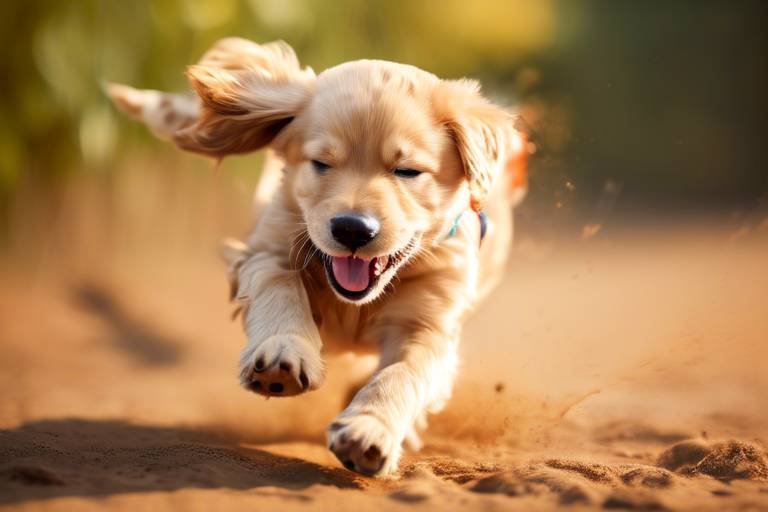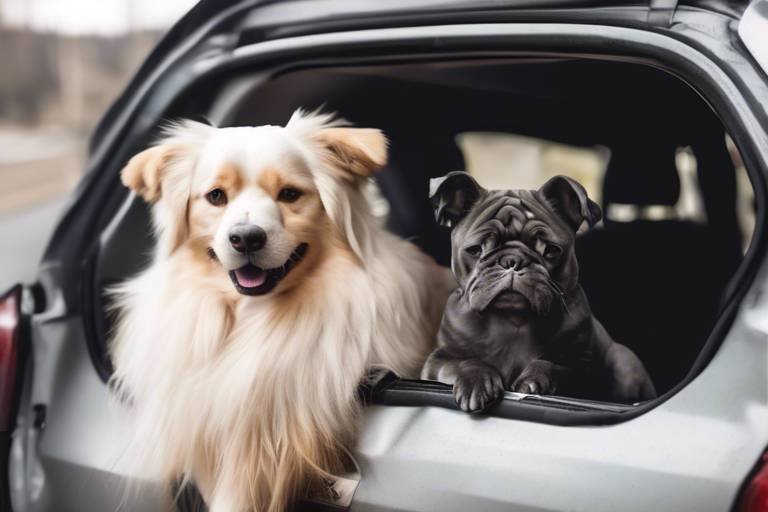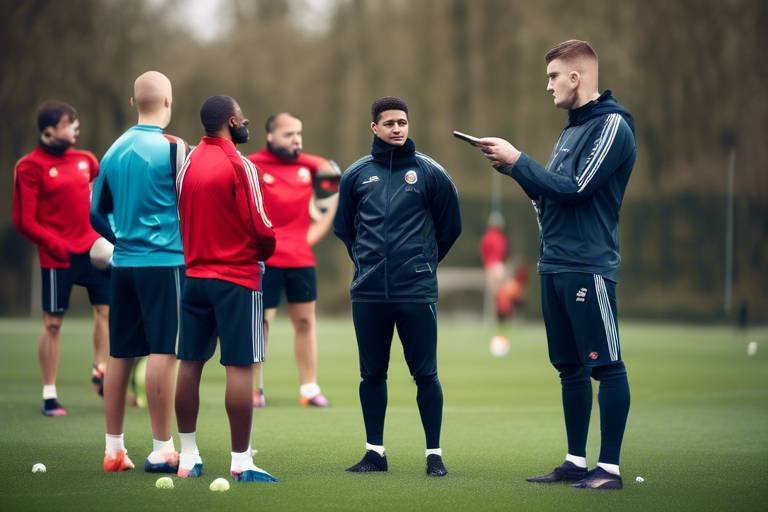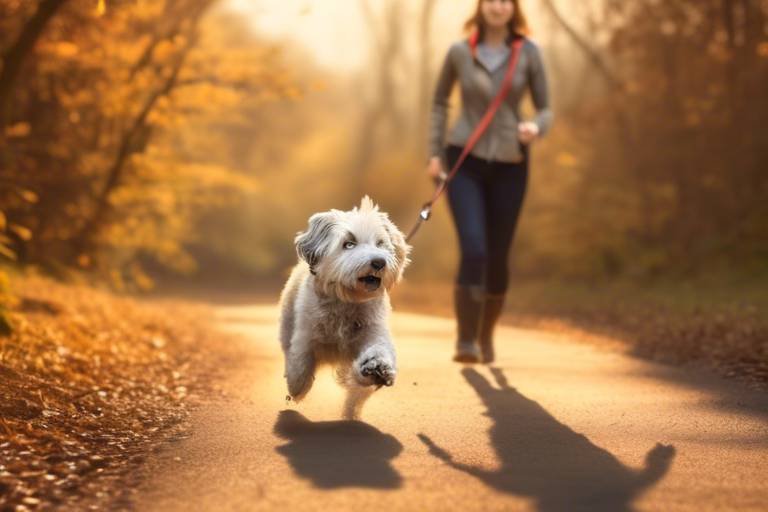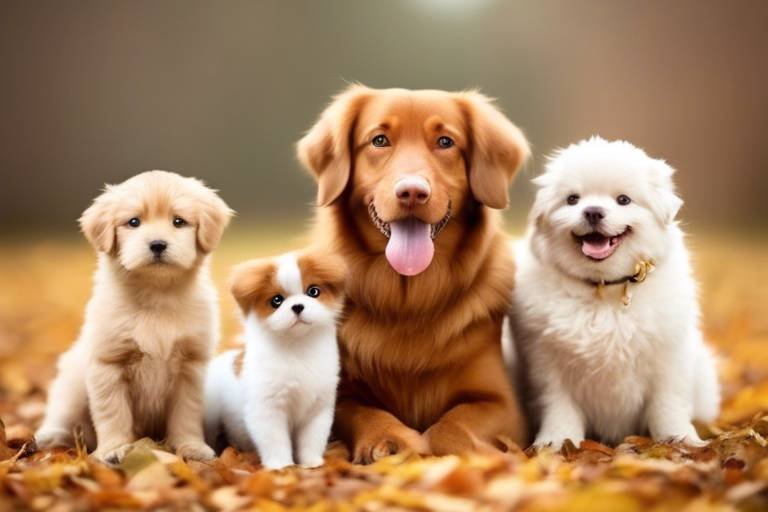The Role of Habituation in Pet Behavior
When it comes to our beloved pets, understanding their behavior is essential for nurturing a strong bond. One of the most fascinating aspects of animal behavior is habituation, a learning process that allows pets to become accustomed to various stimuli over time. Imagine a dog that initially barks at every passing car; with consistent exposure, it learns to ignore them. This transformation is not just a simple trick; it’s a vital part of their emotional and psychological well-being. By grasping the concept of habituation, pet owners can significantly improve their pets' training, socialization, and overall happiness.
Habituation plays a crucial role in shaping how pets interact with their environment. It’s like a filter that helps them distinguish between what’s important and what’s not. For example, when a cat hears the vacuum cleaner for the first time, it may react with fear and anxiety. However, with repeated exposure, the cat learns that the vacuum is harmless, allowing it to relax and go about its day. This process not only helps in reducing fear but also enhances the pet’s ability to adapt to new situations, making them more resilient companions.
Moreover, habituation is not just limited to sounds or objects; it extends to social interactions as well. When pets are introduced to new people or animals, their initial reactions can be influenced by their past experiences. If they have been well-socialized and habituated to various stimuli, they are more likely to respond positively. This leads to a more harmonious household where pets can thrive without constant anxiety or fear. Therefore, understanding and implementing habituation techniques can be a game-changer for pet owners looking to cultivate a peaceful and enjoyable environment for their furry friends.
In summary, habituation is a powerful tool in the realm of pet behavior. It not only aids in training and socialization but also contributes to the emotional stability of pets. By fostering an understanding of this process, pet owners can create a nurturing atmosphere that promotes healthy interactions and reduces fear-based behaviors. As we delve deeper into the significance of habituation in training and socialization, we will uncover practical strategies to enhance your pet's adaptability and overall well-being.

Understanding Habituation
Habituation is a fascinating and essential learning process that plays a significant role in how our pets interact with the world around them. To put it simply, habituation is when a pet becomes accustomed to a specific stimulus after repeated exposure. Imagine a dog that initially barks at the sound of the vacuum cleaner. After a few sessions of the vacuum running while the dog is rewarded with treats and affection, the barking diminishes, and the dog may even relax. This is habituation at work!
The mechanisms behind habituation are quite intriguing. It's a form of non-associative learning, meaning that pets learn to ignore stimuli that are neither harmful nor rewarding. This process is not just limited to dogs; it applies to various species, including cats, birds, and even reptiles. For example, a cat may initially react with surprise to the sound of a doorbell, but over time, it learns that the sound does not pose a threat and may eventually ignore it altogether.
One of the most remarkable aspects of habituation is its adaptability. Different pets may habituate at varying rates depending on their personality, past experiences, and the nature of the stimulus. Some pets may take longer to adjust to new noises or environments, while others may adapt almost instantly. Understanding these differences can help pet owners tailor their approaches to training and socialization. For instance, a shy dog might need more time and positive reinforcement to feel comfortable around unfamiliar sounds, while a more confident dog may adapt quickly.
In summary, habituation is a crucial process that influences how pets respond to their surroundings. By recognizing and facilitating this learning process, pet owners can create a more enriching and less stressful environment for their furry friends. This understanding not only aids in training but also fosters a deeper bond between pets and their owners.
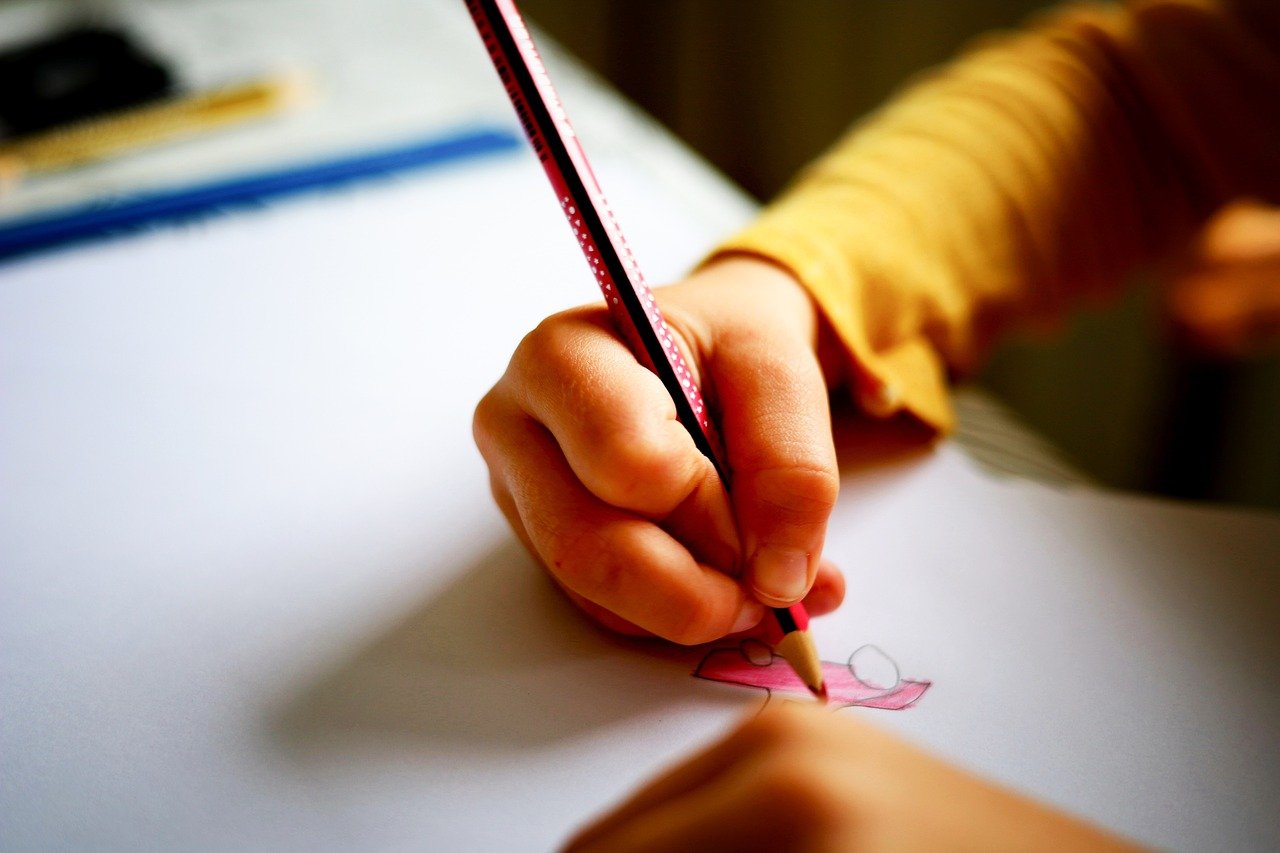
The Importance of Habituation in Training
When it comes to training our furry friends, understanding the concept of habituation is absolutely crucial. Habituation is the process by which pets learn to ignore or become accustomed to certain stimuli over time. This means that when we introduce new commands or cues, a pet that has successfully habituated will respond more positively and quickly. Think of it like teaching a child to ride a bike; at first, they may be wobbly and unsure, but with practice and repetition, they become more confident and skilled. Similarly, pets need time to adjust to training cues, and that’s where habituation plays a pivotal role.
Effective training relies heavily on a pet's ability to recognize and respond to commands. When pets are exposed to training cues consistently, they start to associate those cues with specific actions or behaviors. For example, when you say "sit" while gently pushing down on your dog's rear, they may initially resist. However, through repeated exposure and consistent reinforcement, they begin to understand that sitting is the desired behavior when they hear that command. This understanding is a direct result of habituation, which enhances communication between pets and their owners.
Moreover, the relationship between habituation and training outcomes is significant. A well-habituated pet is more likely to exhibit desirable behaviors, making the training process smoother and more enjoyable for both the pet and the owner. When pets are calm and confident in their environment, they are more receptive to learning. For instance, consider a dog that has been properly habituated to the sound of a vacuum cleaner. Instead of barking or hiding, this dog may simply lie down and relax, allowing its owner to focus on training without distractions.
Incorporating positive reinforcement into the training process can further enhance habituation. By rewarding pets for exhibiting the desired behavior, you create a positive association that encourages them to repeat that behavior in the future. This is similar to how we feel motivated to perform well at work when our efforts are recognized and rewarded. The more positive experiences a pet has during training, the more likely they are to become habituated to the process, leading to better outcomes.
Positive reinforcement is not just a buzzword; it’s a powerful tool in the trainer's toolkit. By giving treats, praise, or playtime as rewards, you reinforce the behaviors you want to see more often. This creates a cycle of learning where pets feel encouraged to respond to commands, thus speeding up the habituation process. For example, if your dog learns to sit and receives a tasty treat every time, they will quickly associate the command with something positive, making them more likely to sit on command in the future.
But remember, timing and consistency are key! If you reward your pet too late, they may not connect the behavior with the reward. It’s like trying to win a race but only getting your medal a week later; the excitement is gone! So, make sure to offer rewards immediately after your pet performs the desired action. This immediate reinforcement helps solidify the connection between the command and the behavior in your pet’s mind.
There are various training techniques that can promote habituation effectively. Techniques such as clicker training and desensitization are popular among pet owners. Clicker training uses a sound to mark desired behaviors, making it clear to the pet what they did right. Desensitization involves gradually exposing pets to stimuli that may initially cause anxiety, helping them become more comfortable over time. Both methods rely on the principles of habituation, allowing pets to adapt to new experiences and environments.
In conclusion, the importance of habituation in training cannot be overstated. By understanding how pets learn to adapt to stimuli, we can create a more effective training environment that fosters positive behaviors and strengthens the bond between pets and their owners. So, the next time you’re working with your pet, remember to be patient and consistent. After all, training is a journey, not a race!
- What is habituation? Habituation is a learning process where pets become accustomed to stimuli over time, allowing them to respond more calmly and effectively to training cues.
- How does habituation help in training? Habituation enhances a pet's ability to recognize commands and respond positively, making training smoother and more effective.
- What role does positive reinforcement play? Positive reinforcement encourages pets to repeat desired behaviors, accelerating the habituation process and strengthening the bond between pet and owner.
- What are common challenges to habituation? Challenges can include overstimulation, fear responses, and traumatic experiences that hinder a pet's ability to adapt to new stimuli.
Positive Reinforcement and Habituation
When it comes to training our furry friends, positive reinforcement is like the secret sauce that makes everything better. Imagine trying to teach a dog to sit without any treats or praise. It would be like asking a child to do homework without any rewards; motivation would plummet! Positive reinforcement is all about rewarding your pet for good behavior, which not only encourages them to repeat those behaviors but also helps them to habituate to the commands and cues you’re teaching.
Think of habituation as a bridge that connects your pet’s instinctual reactions to learned behaviors. When you consistently reward your pet for responding to a command, it helps them associate that command with something positive. For example, if your dog learns that sitting on command earns them a tasty treat, they’re more likely to sit when asked in the future. This simple act of rewarding desired behaviors can significantly accelerate the habituation process and strengthen the bond between you and your pet.
In addition to treats, there are various forms of positive reinforcement you can use. Here are a few examples:
- Verbal Praise: Using an enthusiastic tone can make your pet feel appreciated.
- Affection: A good scratch behind the ears or a belly rub can be just as rewarding as food.
- Toys: Sometimes, the best reward is a fun game with their favorite toy.
However, timing is everything. If you wait too long to reward your pet after they perform the desired behavior, they may not connect the dots. This is where the concept of timing and consistency comes into play, which we’ll explore in the next section. The key is to be quick and consistent with your rewards, creating a clear association between the command and the positive outcome.
Furthermore, different pets respond to different types of reinforcement. For instance, while some dogs may go wild for a treat, others might be more motivated by playtime or verbal praise. Understanding your pet’s unique preferences can help you tailor your approach to maximize the effectiveness of positive reinforcement. In a way, it’s like being a detective, figuring out what makes your pet tick and using that knowledge to enhance their learning experience.
Ultimately, positive reinforcement not only helps pets learn but also fosters a trusting relationship between you and your furry companion. When pets feel safe and rewarded, they are more likely to explore new environments and experiences without fear. This is crucial for their overall well-being and socialization. By using positive reinforcement effectively, you can make the process of habituation not just successful, but also enjoyable for both you and your pet.
Timing and Consistency
When it comes to training our beloved pets, are not just important; they are absolutely crucial. Imagine trying to teach a child a new skill without giving them immediate feedback—how effective do you think that would be? The same principle applies to our furry friends. If we want them to learn commands or behaviors, we need to reward them at the right moment, ensuring that they clearly associate the action with the reward.
Consider this: if you tell your dog to sit and only give them a treat five minutes later, they might be confused about what behavior earned them that tasty reward. This delay can lead to frustration for both the pet and the owner. Instead, by rewarding your pet immediately after they sit, you reinforce the behavior effectively. Timing, in this case, acts as a bridge that connects the action to the reward, making the learning process much smoother.
Consistency is the other half of the equation. Just as a child learns better in a structured environment, pets thrive on predictability. If you give a treat for sitting today but ignore the same behavior tomorrow, your pet might think, “Well, maybe sitting isn't that important after all.” This inconsistency can lead to confusion, and ultimately, a lack of trust in the training process. To avoid this, it’s essential to establish a set of rules and stick to them. For example, if you decide that your dog gets a treat for sitting, make sure you do so every time they perform the action correctly.
It’s also helpful to create a training schedule that incorporates consistent practice sessions. This not only helps your pet understand what is expected of them but also strengthens the bond between you two. Here’s a simple table to illustrate how you might structure your training sessions:
| Day | Training Focus | Reward Timing |
|---|---|---|
| Monday | Sit Command | Immediately after sitting |
| Wednesday | Stay Command | Immediately after staying |
| Friday | Come Command | Immediately after coming |
By following a structured approach like this, you can enhance your pet's learning experience and make training sessions more enjoyable for both of you. Remember, the goal is to create a positive atmosphere where your pet feels encouraged to learn and grow. So, when you think about timing and consistency, think of them as the dynamic duo of effective training—one without the other can lead to a less than optimal experience for your pet.
Common Training Techniques
When it comes to training our furry friends, employing effective techniques can make all the difference in their ability to habituate to new commands and environments. One of the most popular methods is clicker training, which utilizes a small handheld device that makes a distinct sound when pressed. This sound acts as a marker, signaling to your pet that they have performed the desired behavior. The beauty of clicker training lies in its clarity; pets quickly learn to associate the sound with positive outcomes, such as treats or praise. This method not only enhances their learning experience but also strengthens the bond between pet and owner, making training sessions fun and engaging.
Another effective technique is desensitization, which is particularly useful for pets that exhibit fear or anxiety in response to certain stimuli. This process involves gradually exposing your pet to the source of their fear in a controlled manner. For example, if your dog is afraid of loud noises, you might start by playing a recording of a soft sound and gradually increasing the volume over time. The key here is to ensure that the exposure is paired with positive reinforcement, helping your pet to build a more positive association with the previously feared stimulus. This approach not only aids in habituation but also promotes confidence in your pet.
Moreover, consistency is crucial in any training technique. Pets thrive on routine, and establishing a clear set of commands and expectations can significantly enhance their learning process. For instance, using the same word for a command each time—like "sit" or "stay"—helps your pet understand what is being asked of them. In addition, incorporating positive reinforcement consistently throughout the training sessions reinforces desired behaviors and encourages your pet to repeat them. Rewarding your pet immediately after they exhibit the desired behavior creates a strong connection between the action and the reward, making it easier for them to learn over time.
In summary, utilizing techniques like clicker training and desensitization, while maintaining consistency and positive reinforcement, can greatly facilitate your pet's habituation process. By making training a positive and enjoyable experience, you not only help your pet become more adaptable but also deepen your relationship with them.
Socialization and Habituation
Socialization is an essential aspect of a pet's emotional health, and it intertwines seamlessly with the process of habituation. When we think about it, socialization is like teaching our pets the ropes of their world. Just as children learn to navigate social situations, pets need to become accustomed to various stimuli, including other animals, humans, and different environments. Habituation plays a critical role here, as it allows our furry companions to gradually adapt to new experiences without feeling overwhelmed or anxious.
Imagine your dog encountering a busy park for the first time. Without proper habituation, this experience could be terrifying for them. However, with gradual exposure to the sights, sounds, and smells of the park, your dog can learn to feel comfortable and even excited about such outings. This process not only reduces fear and anxiety but also fosters a sense of confidence in your pet. Socialization through habituation helps pets understand that the world is not a scary place, but rather a realm filled with opportunities for fun and friendship.
In order to facilitate effective socialization through habituation, pet owners can employ a variety of strategies. Here are some key methods:
- Gradual Exposure: Introduce your pet to new environments and experiences slowly. Start with quieter settings before moving on to more stimulating places.
- Positive Reinforcement: Use treats and praise to reward your pet for calm behavior during new experiences. This creates a positive association with the situation.
- Controlled Interactions: Arrange playdates with well-behaved pets to help your animal learn appropriate social behaviors in a controlled manner.
Moreover, the importance of habituation in socialization extends to reducing aggressive behavior in pets. When a pet is well-socialized and habituated to various stimuli, they are less likely to react defensively. For instance, a dog that has been properly socialized may be more inclined to greet other dogs with a wagging tail rather than a growl. This not only enhances their quality of life but also makes outings more enjoyable for both the pet and the owner.
However, it’s important to remember that every pet is unique. Some animals may require more time and patience to habituate to new experiences than others. As a pet owner, being attuned to your animal's comfort level is crucial. Watch for signs of stress or anxiety, and adjust your approach accordingly. If your pet seems overwhelmed, it might be beneficial to take a step back and allow them to acclimate at their own pace.
In summary, socialization and habituation are vital components of a pet's development. By understanding and implementing effective socialization strategies, pet owners can help their animals thrive in a world filled with new experiences. A well-socialized pet is not only happier but also more adaptable, leading to a more harmonious relationship with their human companions.
Q: What is the best age to start socializing my pet?
A: The earlier, the better! Start socializing your pet as a puppy or kitten, ideally between 3 to 14 weeks of age, when they are most receptive to new experiences.
Q: How can I tell if my pet is stressed during socialization?
A: Signs of stress in pets can include panting, whining, cowering, or attempting to hide. If you notice these behaviors, it might be best to take a break and try again later.
Q: Is habituation the same as training?
A: Not exactly. While training often involves teaching commands and behaviors, habituation focuses on getting pets used to various stimuli in their environment. Both are important for a well-adjusted pet.
Q: Can older pets be socialized effectively?
A: Yes! While it may take more time and patience, older pets can still learn to adapt to new experiences and environments through proper socialization techniques.

Challenges to Habituation
While habituation is a powerful tool in shaping pet behavior, it’s not always a smooth ride. Just like humans, pets can face various challenges that may hinder their ability to adapt to new stimuli. Understanding these challenges is crucial for pet owners who want to foster a harmonious relationship with their furry friends. One of the primary obstacles to habituation is the presence of fear responses. When a pet experiences a traumatic event or is exposed to overwhelming stimuli, it can lead to heightened anxiety and stress. This can create a vicious cycle, where the pet becomes increasingly fearful of the stimuli, making habituation even more difficult.
Another significant challenge is overstimulation. Imagine walking into a bustling market filled with loud noises, bright lights, and a crowd of people; it can be overwhelming, right? Pets can feel the same way in certain environments. Overstimulation can lead to anxiety, which in turn can block the habituation process. Recognizing the signs of overstimulation—such as excessive barking, pacing, or hiding—is essential for pet owners. Addressing these signs promptly can help prevent negative associations from forming. For instance, if your dog becomes anxious during a family gathering, it might be wise to create a quiet space where they can retreat and feel safe.
Additionally, it’s important to consider the individual temperament of each pet. Some animals are naturally more anxious or sensitive than others. For example, a timid rescue dog may require more time and patience to habituate to new experiences compared to a confident puppy. Understanding your pet's unique personality can help you tailor your approach to their specific needs. This might mean taking smaller steps towards habituation, such as gradually introducing them to new environments or people, rather than overwhelming them with too much too soon.
To illustrate these challenges further, let’s take a look at a simple table that outlines common factors that can impede habituation:
| Challenge | Description |
|---|---|
| Fear Responses | Pets may react negatively to past traumatic experiences, making it hard for them to trust new stimuli. |
| Overstimulation | Excessive sensory input can cause anxiety, preventing pets from adjusting to new situations. |
| Individual Temperament | Some pets are more sensitive and may need a tailored approach to habituation. |
Creating positive experiences is essential in overcoming these challenges. By reinforcing positive interactions and minimizing negative associations, pet owners can greatly enhance the habituation process. For example, if your pet is fearful of loud noises, consider using treats or toys to create a positive association with those sounds. Gradually exposing them to the noise at a low volume while rewarding calm behavior can help them learn that there’s nothing to fear.
In conclusion, while challenges to habituation exist, they are not insurmountable. With patience, understanding, and a tailored approach, pet owners can help their animals adapt and thrive in various environments. Remember, every pet is unique, and what works for one might not work for another. So, stay observant and adjust your strategies as needed to ensure your pet feels safe and secure during their habituation journey.
- What is habituation in pets? Habituation is a learning process where pets become accustomed to stimuli over time, reducing their anxiety and fear responses.
- How can I help my pet with habituation? Gradual exposure to new experiences, positive reinforcement, and creating a safe environment are key strategies.
- What are signs of overstimulation in pets? Look for excessive barking, pacing, hiding, or signs of stress such as panting or drooling.
- Can all pets habituate? Most pets can habituate, but the process may vary based on individual temperament and past experiences.
Overstimulation and Anxiety
Overstimulation in pets can be likened to a child being overwhelmed at a birthday party filled with loud music, flashing lights, and too many people. Just as children may retreat or become irritable in such situations, pets can also exhibit signs of anxiety when they are bombarded with excessive stimuli. This state of overstimulation can hinder the habituation process, making it difficult for pets to adapt to their environment. It’s crucial for pet owners to recognize the signs of overstimulation, which may include excessive barking, pacing, hiding, or even aggression. Understanding these signs can help you take proactive measures to create a more comfortable space for your furry friends.
One of the primary reasons pets experience overstimulation is the sheer amount of new experiences they encounter in their daily lives. Whether it's a bustling street with cars and people or a family gathering with unfamiliar guests, these situations can be overwhelming. The brain of a pet, much like ours, can only handle so much information at once. When they reach their limit, their natural response may be to shut down or react defensively. This is why it’s essential for pet owners to gradually expose their pets to new stimuli, allowing them to process these experiences without becoming overwhelmed.
To help mitigate the effects of overstimulation, consider implementing the following strategies:
- Create a Safe Space: Designate a quiet area in your home where your pet can retreat when feeling overwhelmed. This space should be comfortable and free from distractions.
- Gradual Exposure: Introduce your pet to new environments and experiences slowly. This could mean short walks in busy areas or brief visits to friends’ houses before staying for extended periods.
- Observe Body Language: Learn to read your pet's body language. Signs of discomfort, such as tucked tails, flattened ears, or avoidance behavior, indicate that your pet may need a break.
Additionally, it’s important to maintain a calm demeanor yourself. Pets are incredibly perceptive and can pick up on their owner's anxiety. If you remain calm during potentially overwhelming situations, it can help your pet feel more secure. Consider using calming products, such as anxiety wraps or pheromone diffusers, which can provide additional support in managing their stress levels. Remember, fostering a sense of security and comfort is key to helping your pet navigate through overstimulation.
In conclusion, while overstimulation can pose challenges, understanding its impact on your pet's behavior and taking proactive steps can significantly enhance their overall well-being. By creating a supportive environment and being mindful of their needs, you can help your pet thrive in a world full of stimuli.
Q: How can I tell if my pet is overstimulated?
A: Signs of overstimulation include excessive barking, hiding, pacing, and aggressive behavior. If you notice these signs, it's essential to provide a calm and quiet space for your pet.
Q: What can I do to help my pet relax during stressful situations?
A: Create a safe space for your pet, use calming products, and practice gradual exposure to new experiences to help them feel more secure.
Q: Is there a way to train my pet to handle overstimulation better?
A: Yes! Positive reinforcement training can help pets learn to cope with overstimulating environments. Gradually introduce them to new experiences while rewarding calm behavior.
Reinforcing Positive Experiences
When it comes to fostering a well-adjusted pet, is a game-changer. Just like humans, pets thrive on good vibes! Every time your furry friend encounters something new, whether it’s a sound, a person, or a place, it’s crucial to make that experience a positive one. This approach not only helps in the habituation process but also builds trust and confidence in your pet. Imagine walking into a crowded park with your dog for the first time; if it’s overwhelming and scary, they may develop a fear of crowds. However, if you introduce them to the park gradually, with treats and praise, you're setting the stage for a more enjoyable experience in the future.
To reinforce positive experiences, you can utilize various techniques. For instance, rewarding your pet with treats or affection when they encounter new stimuli can create a positive association. This is particularly effective in situations that might initially cause anxiety. For example, if your dog is nervous around other dogs, bringing along some tasty treats to reward calm behavior can transform their outlook. Additionally, using a calm and cheerful tone can help your pet feel more at ease. Remember, your energy plays a huge role in how your pet reacts to situations!
Another effective strategy is to engage in playful interactions during new experiences. If your cat is hesitant about a new toy, try playing with it yourself first, showing them how fun it can be. This not only piques their curiosity but also reinforces the idea that new things can be enjoyable. Furthermore, consider creating a safe space for your pet where they can retreat if they feel overwhelmed. This sanctuary can be a cozy bed or a quiet room where they can relax and process their feelings.
It's also important to recognize that not all experiences will be positive right away. This is where patience comes into play. If your pet shows signs of discomfort, it’s essential to back off and give them time. Forcing them into a situation they’re not ready for can lead to negative associations. Instead, try to gradually acclimate them to the new experience at their own pace.
To summarize, reinforcing positive experiences is about creating a supportive and enriching environment for your pet. Here are some key points to remember:
- Use treats and praise to reward calm behavior.
- Engage in playful interactions to create positive associations.
- Provide a safe space for your pet to retreat to when needed.
- Be patient and allow your pet to acclimate at their own pace.
By focusing on these strategies, you’ll not only help your pet adapt better to new environments but also strengthen the bond you share. Remember, a happy pet is a well-adjusted pet!
Q: What should I do if my pet is still fearful after several positive experiences?
A: If your pet continues to show fear, it may be helpful to consult a professional trainer or a veterinarian who specializes in animal behavior. They can offer tailored strategies to help your pet overcome their fears.
Q: How long does it take for a pet to habituate to a new experience?
A: The time it takes for a pet to habituate can vary widely based on the individual animal, their past experiences, and the nature of the new stimulus. Some pets may adapt quickly, while others may need weeks or even months.
Q: Can I use habituation techniques for older pets?
A: Absolutely! Habituation can be beneficial for pets of all ages. Older pets may take a bit longer to adapt, but with patience and positive reinforcement, they can still learn to feel comfortable with new experiences.
Frequently Asked Questions
- What is habituation in pets?
Habituation is a natural learning process where pets gradually become accustomed to certain stimuli in their environment. This means that over time, they learn to ignore or accept things that initially caused them stress or anxiety, like loud noises or new people. It’s like when you move to a new neighborhood and at first, the sounds are overwhelming, but eventually, you hardly notice them!
- How does habituation affect pet training?
Habituation plays a crucial role in effective pet training. When pets habituate to commands and cues, they are more likely to respond positively and quickly. This makes it easier for owners to communicate with their pets. Think of it as building a common language; the more familiar your pet becomes with your words and actions, the smoother the training process will be!
- Can positive reinforcement help with habituation?
Absolutely! Positive reinforcement is a powerful tool in facilitating habituation. When pets receive rewards for desired behaviors, they associate those actions with positive outcomes, which speeds up the habituation process. It's like giving a high-five for a job well done; it encourages them to keep up the good work!
- What are some common training techniques that promote habituation?
Some popular training techniques that encourage habituation include clicker training and desensitization. Clicker training uses a sound to mark desired behaviors, while desensitization gradually exposes pets to fear-inducing stimuli in a controlled way. Both methods help pets adapt to new experiences without overwhelming them.
- How does socialization relate to habituation?
Socialization is vital for a pet's emotional well-being, and habituation plays a key role in this process. When pets are habituated to different people, environments, and other animals, they are less likely to experience anxiety or fear. It’s like teaching them the ropes of the world so they can navigate it with confidence!
- What challenges can hinder habituation in pets?
Several challenges can impede the habituation process, such as fear responses and traumatic experiences. If a pet has had a negative encounter with a specific stimulus, it may be more difficult for them to habituate to it. This is where patience and understanding from the owner are essential.
- What are the signs of overstimulation in pets?
Overstimulation can lead to anxiety in pets, and signs may include excessive barking, pacing, or hiding. If you notice these behaviors, it’s important to give your pet some space and allow them to calm down. Think of it as giving them a timeout to recharge!
- How can I create positive experiences for my pet during habituation?
Reinforcing positive experiences is crucial for successful habituation. You can do this by introducing new stimuli gradually and rewarding your pet for calm behavior. It’s all about making new experiences fun and rewarding, so your pet learns to associate them with good vibes!





